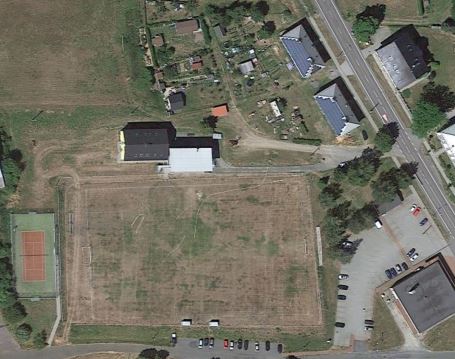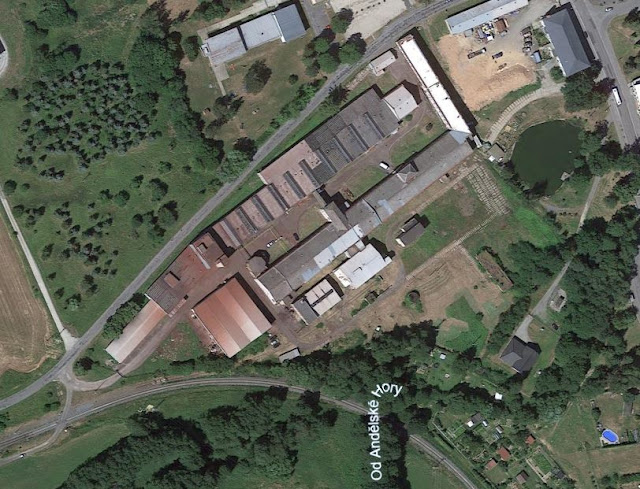Lichtewerden
Lichtewerden sub-camp was located at a thread factory owned by Gustav Adolf Buhl und Sohn, a textile company, in Světlá, now in the Czech Republic. Around 300 women arrived there from Birkenau on 11th November 1944. They were mostly Polish Jews from Krakow, Czechoslovakia, Slovakia and Hungary and were accommodated in two residential barracks, while two other barracks contained a kitchen, washroom, latrine and storage space. An electrified barbed wire fence surrounded the camp and there were wooden guard towers at the corners. The prisoners arrived by rail and were deposited to the west of the factory building where there were SS guards to meet them. They were then escorted by these guards to their accommodation.
Each of the two accommodation barracks was divided into five rooms. One of the accommodation barracks served as an infirmary. These barracks were painted green on the outside with pink window shutters.
In each of the rooms were 14-16 bunk beds, 2 tables and 4-5 wardroves. Each prisoner was given a straw mattress, pillow and blanket.
Meals consisted of three kilograms of bread per 6 people, potato and dill soup, margarine and a tablespoon of marmalade per person, mixed with flour and water. Sometimes they were given a tablespoon of canned horsemeat.
The camp commander was probably SS-Oberscharfūhrer Hans Reeg, whom the women tended to call “Schnauze” on account of him answering“Halt die Schnauze!” (“Shut your trap”) to any question.
The guards were SS men who were too old for front-line service and there were four SS Aufseherinnen. The prisoners worked on thread-making machinery and in the linen mill. The latter was particularly unpleasant because of all the dust in the air, which affected breathing. The prisoners also had to weigh and carry 50 kilogram sacks of cotton, and they frequently fainted while doing this. There were also some selections from the camp, the prisoners selected were probably taken back to Auschwitz and murdered. Some of the ill prisoners in the infirmary were shot.
Some of the prisoners tried to sabotage the goods they were making, but this was discovered. The camp commander beat the prisoners. One of the women who had a baby while in the camp had the baby taken away from her. The baby was probably killed.
The camp staff escaped the Soviets by changing into civilian clothing and walking away on 6th May, and the Russians arrived two days later.
(Above: The threat factory)
(Above: The SS barracks)
(Above: The thread factory)
(Above: The former sub-camp site)








Comments
Post a Comment